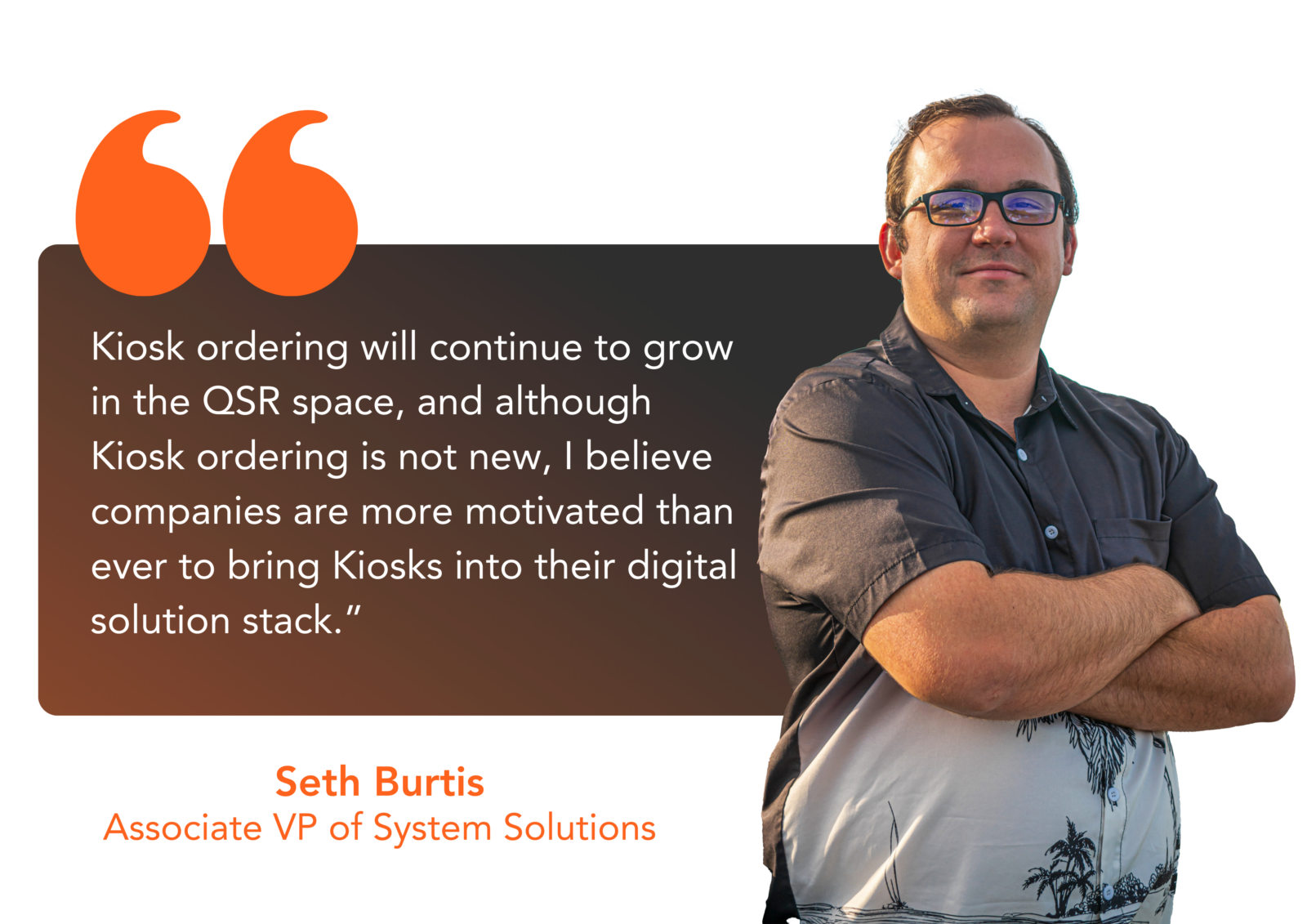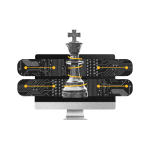



Effective Tech Stack Management for Food Service Brands
October 15, 2024

Navigating the Digital Maze:
Effective Tech Stack Management for Food Service Brands
An Interview with Seth Burtis, Associate VP of Systems Solutions, at 5&5
In the post-Covid era, restaurant brands are navigating an overwhelming array of digital solutions to support every facet of their business, each promising to hold the key that will unlock growth. How are food service operators making sense of it all? How are decision makers weighing the options and determining what the right digital solutions are for their brands? We sat down with Seth Burtis, the Associate VP of Systems Solutions at 5&5 and an industry veteran, to delve into his extensive experience with various brands and to explore the trends he’s observed as the restaurant industry transitions into a digital future.
Q: With the increasing array of digital solutions and technologies available to restaurant companies today, what do you believe should be the first step for emerging or enterprise brands when considering major platform investments such as POS systems and online ordering?
A: The first step must be identifying the gap or the problem that needs to be solved. Is the brand’s current system at the end of its life, or are there aspects missing that have spurred interest in a new system? By identifying the goals and objectives to be accomplished first, the brand is put in the right mindset as it embarks on such an investment.
Q: In your opinion, what are the biggest hurdles brands face when implementing digital solutions?
A: Often times, new solutions need to be integrated into existing systems, and those integrations can be painful – especially when attempting to integrate a newer technology into a legacy system, which is often the POS. The POS is the heart of restaurant technology, and if the heart isn’t healthy, it puts a strain on all other aspects of the business.
When it comes to implementing new technology, Operations and Employee Training is a pain point I often see with food service brands. The most successful technology rollouts involve getting operations on board and excited about the changes. It essentially requires involving someone from operations very early on to bring them onboard and to ensure decisions are made with a keen focus on how it is going to impact the operators in store.
The last hurdle worth mentioning is menu variation, especially when it comes to brands with a high number of franchise locations. While it is important to listen to and understand franchisee needs, often I have seen brands overaccommodate vocal franchise owners. This might translate into locations having unique digital menus without any consistency. This increases the burden on IT Teams or those responsible for managing menus, and it can lead to an inconsistent ordering experience for customers. Digital ordering should be a streamlined process with a consistent menu as much as possible. Market-specific items always should be supported, but accommodating every small nuance across many different franchisees is death by a thousand cuts.
Q: Do you see a difference in approach for implementations when it comes to fully corporate-owned vs franchised organizations? Should there be a difference in approach?
A: Absolutely. As I mentioned previously, franchisee environments can complicate things significantly if there is no brand consistency. Ideally, the approach should be the same, but that is dependent on brand consistency, franchisee agreements, the overall amount of corporate vs franchise locations, and the total number of owners. The most successful implementations treat franchisee locations just like corporate locations and make an effort to involve key franchise owners from conception to ensure they’ve bought into and are excited about the technology.
Q: What are your thoughts on the growing adoption rate of data-centric, AI-optimized, customer experience-enhancing programs and tools on the market today?
A: In my opinion, use of AI will increase over the next several years and companies that harness its power will reap success. AI can help level the playing field for smaller businesses that typically wouldn’t have the same capabilities without the addition of AI. When used properly, AI can help brands provide highly customized experiences for their customer bases. AI can also provide companies with a plethora of customer data and insights to allow for better decision-making. Here at 5&5, we partner with several vendors who are leveraging AI to create new solutions, designed specifically for restaurants.
Q: What are some of the emerging digital solutions you’re interested in?
A: There are so many to choose from! If I had to choose two, they would be Self-ordering Kiosks & AI Ordering. With the rapidly increasing cost of labor and goods, food service brands must find ways to improve their margins. As I see it, AI ordering at the drive-thru is the future. I believe over time this will become the norm for fast-food restaurants. Kiosk ordering will continue to grow in the QSR space, and although Kiosk ordering is not new, I believe companies are more motivated than ever to bring Kiosks into their digital solution stack.
Q: Implementing & managing digital platforms demands significant IT support and training. What do you believe is the biggest value 5&5 provides brands around digital implementation & ongoing management?
A: 5&5 allows for rapid expansion of resources, and what I mean by that is, traditionally if a company is looking to implement a new solution, they need to put that work on existing resources, or hire from the outside. Neither of those options are ideal. If the work is put on an existing resource, you are essentially asking that resource to continue doing their normal job, while taking on an important project for the company. From my experience, when this approach is taken, the project is not executed quickly or accurately and often leads to lost revenue. Hiring outside is similar. Companies are running the risk of the new hire not being the right fit, and even if they are, it will take at least 90 days for them to start adding real value. By bringing 5&5 in, the company has access to experts in the industry, projects will go smoother, and be completed much faster than if the brand taps internal resources or hires from the outside. 5&5 also allows for the flexibility for the brand to choose to end services once the project is complete, or extend on for longer, ongoing support. For ongoing management, brands gain access to experts in their key systems, with none of the overhead. This means the brand will always have the ability to execute business-critical projects and tasks.
5&5 also allows for great flexibility, so if a time-sensitive project or task comes up, 5&5 can quickly expand resources internally to get the task completed which would never be an option with internal resources at a company. Companies never need to worry about their IT admin being out on vacation, or moving on to a new job leaving the business in a poor position. 5&5 always has a minimum of two experts in a system which provides redundancy. In addition to the redundancy provided, 5&5 keeps documentation and will provide training to brands if needed. When only having internal resources, documentation and training can be minimal. If your menu programmer takes a new position, you may have 2-3 weeks to extract as much information as possible, and almost no training opportunities as the company most likely has not yet hired a replacement.

5&5 can help support your brand with its digital growth, whether implementing new technologies or managing digital components of your existing tech stack. Our team can create a thorough RFP if you are looking to switch to a new provider. We can assist with the implementation of a new POS or Online Ordering system, including building out the menu and managing the project from kickoff to full rollout. We also can take over the maintenance, programming & troubleshooting of your current systems if you are having internal time, resource or knowledge constraints. Reach out today for a free consultation!










Leave a Reply